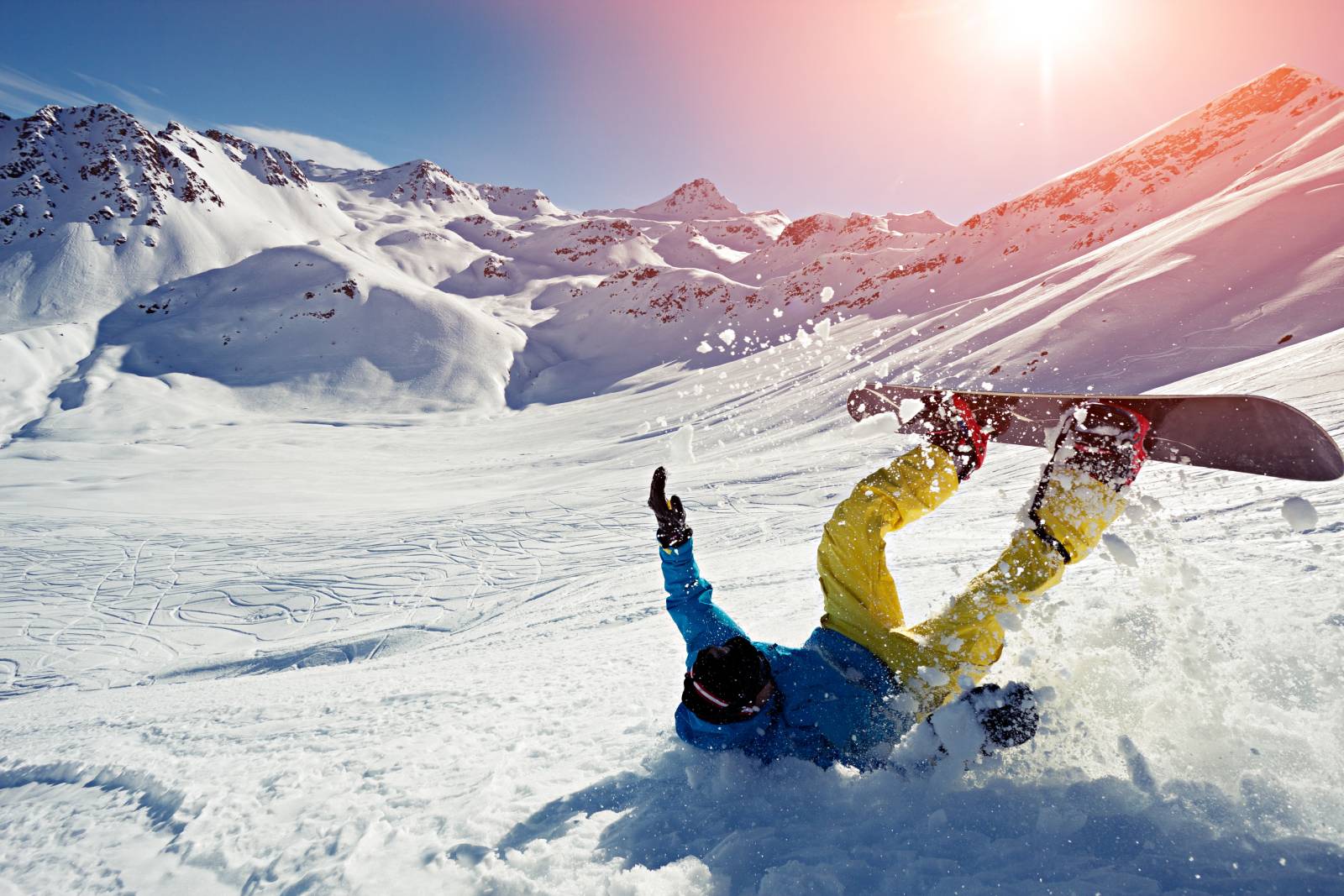BLOG
Prepare your body and become a legend on the track!
All athletes, regardless of what sport they play, have to prepare before hitting the snow. Strength, endurance and cardiovascular fitness are the basic components in the prevention of any sports injuries.
The same goes for snowboarders. Although equipment plays an important role too, training in the weeks leading up to taking it to the slopes can be crucial. Pre-season training helps protect against the most common snowboarding injuries.
What are the most common injuries?
Snowboarders have a strong chance of injuring their upper body, while skiers have a bigger chance of injuring their lower body, especially the knees and the area around them. Head injuries, including concussions, are common in both sports.

The most common snowboarding injuries include:
• Joint fractures
• Thumb injuries
• Clavicle fracture
• Shoulder dislocations
• Sprained foot/ankle
• Brain concussion
Snowboarding training schedule
It is recommended that you add sport-specific exercises to your programme 6 to 8 weeks before the start of the season. If you do not exercise regularly, gradually increase the intensity and number of exercises. If you exercise too much, there is a serious possibility that you will injure yourself.
Important elements:
• Warm-up: 5 to 10 minutes before you start exercising do dynamic warm-up exercises.
• Strength training: Whether you do exercises with or without weights, building muscle and strength is an important component of injury prevention.
• Cardiovascular exercise: Exercising regularly to increase your heart rate will also increase your endurance.
• Balance training: maintaining balance is very important for both snowboarding and skiing. Balance-specific exercises should become an essential part of your training.
• Stretching after training: stretching increases flexibility and mobility and boosts overall recovery.
The next step is to do exercises specific to your sport.
Exercises for snowboarders
While there are many exercises to help you prepare for the winter season, some of the most beneficial ones do not involve the use of weights. Experts recommend starting with three sets of 10-20 repetitions, depending on your current fitness level.
Squats
Instructions
1. Place your feet shoulder-width apart at an angle of approximately 45 degrees.
2. From this position, shift your weight toward the front of the heel/midfoot to maintain balance.
NOTE: Do not rest too much on your heels or toes, as this will put unwanted pressure on your knees.
3. Begin the descent, as if you were sitting on a chair. Keep your chest up and your knees in line with your toes. Do not pull the knees inward, and the heels must not lift off the ground.
4. Lower your hips until your thighs are parallel to the floor, depending on your level of flexibility.
5. Push yourself up, leaning on the middle of the foot and stand up.
NOTE: Remember to keep your chest straight.
Lunges
Instructions
1. Stand up straight with your feet hip-width apart.
2. Keeping your chest straight, step forward with your right leg so that it forms a 90-degree angle, and bend the knee of your back leg toward the ground.
3. Push the body up until it lifts off the ground.
4. Lift the back foot and place it parallel to the front foot.
5. Repeat the movement on the opposite leg.
Ski jumps/ skate jumps
Instructions
1. Begin by positioning your body in a quarter squat.
2. Lift your left leg off the ground, shifting your weight to your right leg.
3. Push off the right leg so that you lean sideways on the left. Then pull your right leg slightly behind you. Repeat the movement with the opposite leg.
Plank/Side Plank
Instructions
1. Lie on the floor with your elbows and forearms on the ground. The shoulders should be directly above the elbows and the feet should be straight on the floor.
2. Tighten your core (tighten your muscles as much as possible), then lift your body onto your elbows and toes. The back and buttocks must be in a straight line.
3. Do 3 sets of planks, each lasting 30 seconds to start. You can increase the time in the plank position as you progress.
NOTE: If holding your body in this position is too difficult for you, you can start by resting your knees on the ground and then gradually rise to your toes.
Push-ups
Instructions
1. Place your body in a plank position, with your hands under your shoulders and your legs behind you.
2. Tighten your core and slowly lower yourself towards the ground.
3. The chest should lightly touch the ground, and the knees should not touch the floor.
4. Push yourself up with the help of your arms, until you straighten them completely.
5. Repeat.
NOTE: You can also do this exercise with your knees bent too.
Back Stretch / Superman
Instructions
1. Lie on your stomach with your arms outstretched in front of you, keeping your hands as close to your ears as possible.
2. Raise your arms and legs together a few centimetres off the floor so that your palms are always facing the floor.
3. Pause, then lower your arms and legs to the starting position.
BONUS TIP:
Physical therapy can serve as excellent injury prevention and provide insight into which muscles you need to train more in order to be in superior shape and better able to maintain balance. If you accidentally injure yourself on the track, physical therapy is the first step in eliminating the pain.
Address
Pivljanina Baja 19
Working time
Working days: 8AM – 8PM
Saturday: 8AM – 4PM
Telephone
065 60 55 865
